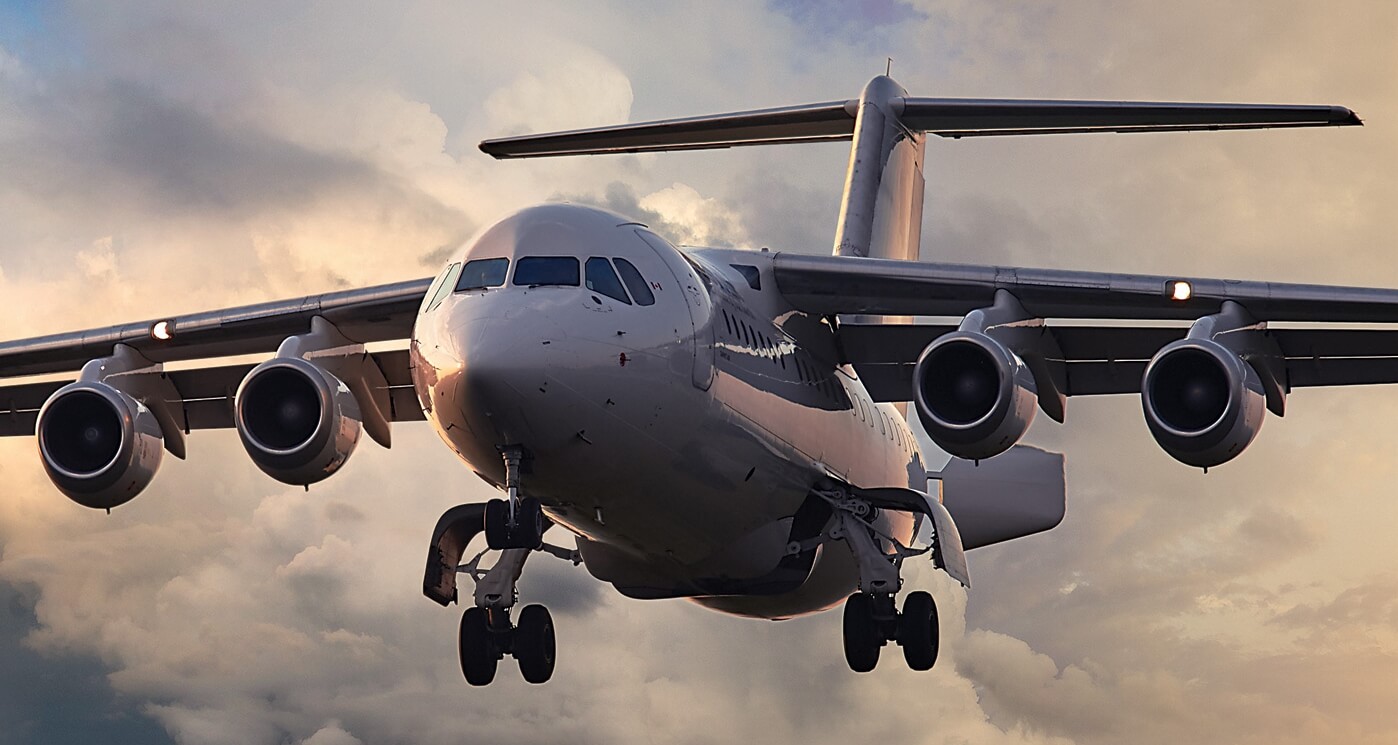Estimated reading time 11 minutes, 54 seconds.
It’s no secret that flying in the Canadian North brings its own unique set of challenges, and they’re not just environmental. Northern operators face economic, regulatory and logistical barriers not experienced by their more southern cousins; and they’re constantly changing.
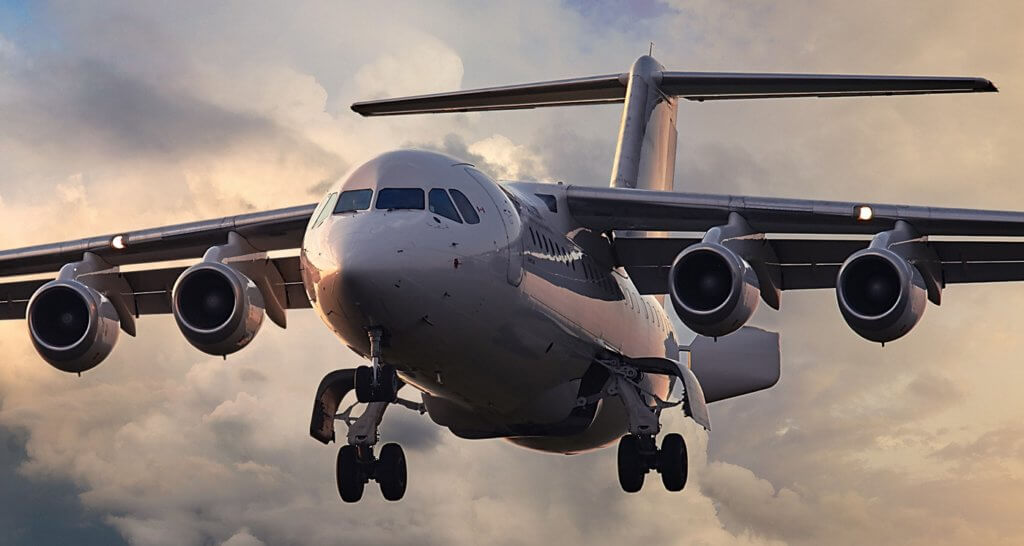
Meeting these challenges and staying ahead of the competition takes some original thinking and serious fleet rationalization. At the forefront of this movement is Yellowknife-based Summit Air; in recent years, the company has invested more in aircraft suitable for the North than any other operator.
“There’s a changing profile of the aviation business in the North,” said Myles Cane, Summit’s senior vice-president operations and accountable executive. “You can tie it directly to a lack of exploration, which you can in turn tie directly to a difficult economic environment for mining companies.”
Historically, he added, airlines have operated with everything from a Cessna 185 to a 60-seat turboprop and everything in between, due to the varying needs presented by multiple phases of mining activity–from exploration and drilling to putting in runways for crew changes.

“The exploration has mostly gone away,” continued Cane, “largely due to the global economy and some of the obstacles faced by mining companies applying for regulatory approvals.”
Moreover, he feels Ottawa regulators don’t always recognize the uniqueness of the extreme northern operating environment.
The fleet
Key to meeting these challenges is maintaining a fleet that’s optimized for all missions. Summit’s current fleet consists of two Avro RJ85s, four ATR-72s, one Dash 8-100, six Dornier 228s, three Twin Otters, one Piper Navajo and two Short Skyvans. A rationalization program is well underway, with further activity still in the cards–the Piper Navajo and the Dash 8 are slated for sale.
The current mix of aircraft has evolved out of predecessor companies since the Ledcor Group purchased the original Summit Air Charters, a long-time Yellowknife-based operator, in 2009.
“Summit Air five or six years ago was mainly a Dornier operator,” said Lane Zirnhelt, chief operation officer. “They then purchased a company called Arctic Sunwest Charters in August 2012, put the two together, and formed Summit Air as it is today. Subsequently, a fleet rationalization program was introduced, allowing us to move out of the Buffalo and the Dash 8 aircraft and into ATRs and RJ jets.”
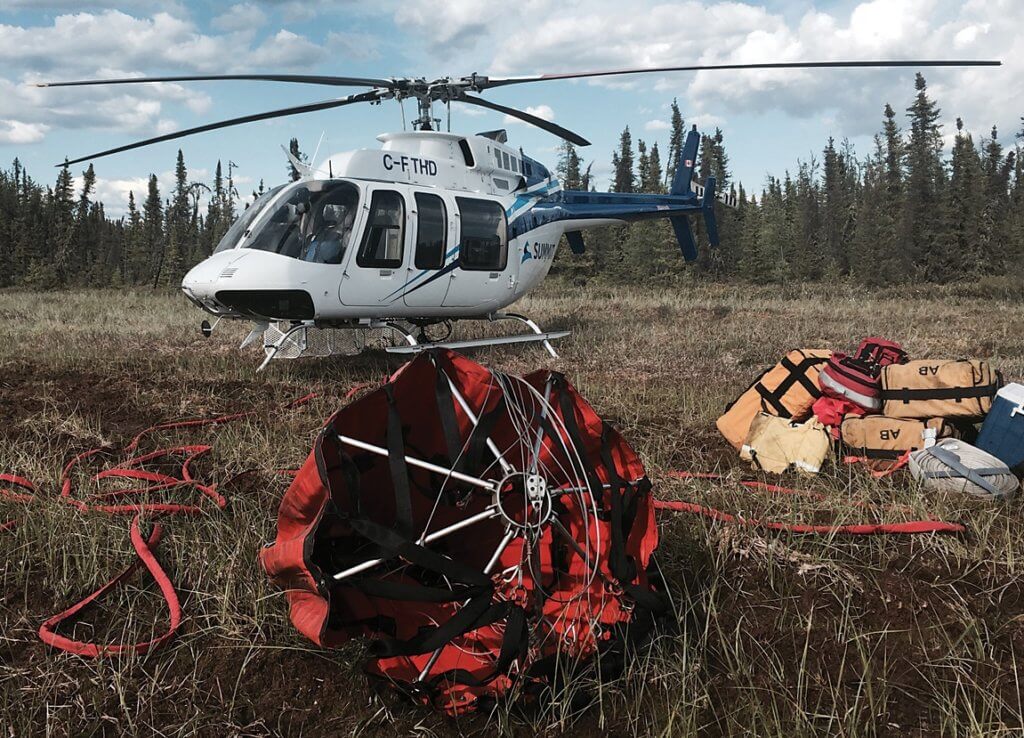
A big driver in the rationalization strategy is the need to replace the North’s gravel-certified Boeing 737s. Summit decided that the Avro RJ series is ideal for the role.
“We recognized early on the requirement in the marketplace for a 737 replacement,” said Cane. “The 737-200 is in the twilight of its operational lifespan, but it has been a massive workhorse for the North. While the RJ is not an identical replacement, because it has slightly smaller capacity, we are pursuing an RJ-100 which is a larger variant that would enable us to offer similar seating capacity to the 737-200 but burn significantly less fuel.”
So Summit conducted a lengthy and expensive gravel certification program for the RJ series, concluded in the summer of 2015 with the help of various industry partners. Summit Air now possesses the STC (supplemental type certificate) that permits [not ‘permitting’] the RJ to operate on gravel runways in Canada.
Once the Navajo is sold, the entire Summit stable will be high-wing models. “That was one of the strong indications that we were on the right track with the RJ series,” said Cane. “The struggle with jet aircraft in the North has always been the ingestion of gravel, and if you move the engines away from the runway that minimizes the problem.”
Moreover, an important added safety factor with the RJ is its four engines. “Performance numbers for aircraft are predicated on losing an engine at a critical phase of flight,” continued Cane. “With a four-engine aircraft you are only losing 25 per cent of your thrust rather than 50 per cent. That is one of the reasons it allows short field performance and a huge safety margin, because you can continue flying with much less impact to performance after a failure.”
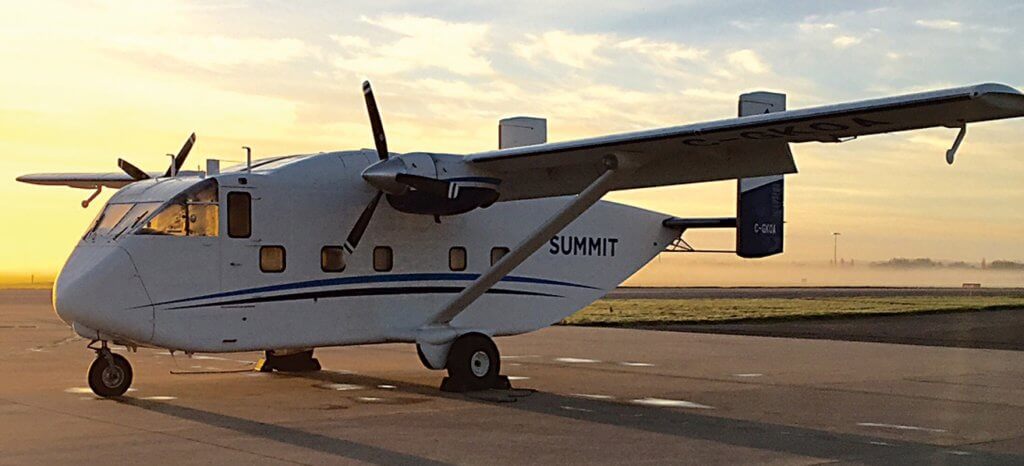
Currently Summit’s RJ85s, the only such aircraft flown in the North, operate for two main purposes. They have an ACMI (aircraft, crew, maintenance and insurance) deal with First Air. “We fly some of their scheduled routings,” said Cane. “And they code share those routings with Canadian North.”
The other primary use of the RJ85 is fly-in fly-out crew change charters for the diamond mines in the Northwest Territories and Nunavut.
Summit’s two Skyvans are currently based in the U.K. under contract to the Ministry of Defence. “We have dedicated pilots and mechanics who have been working with the type for years,” explained Cane. “They provide aircraft lift to all factions of the U.K. military to conduct parachute training. We operate from two bases there, and are starting lift for their parachute demonstration team.”
Summit’s only other overseas deployment is one Indonesia-based Dornier 228. It is also an ACMI agreement, with a large operator called Susi Air. Susi needed an experienced operator of the Dornier 228 for some new contracts that required twin-engine, 19-passenger turboprops.
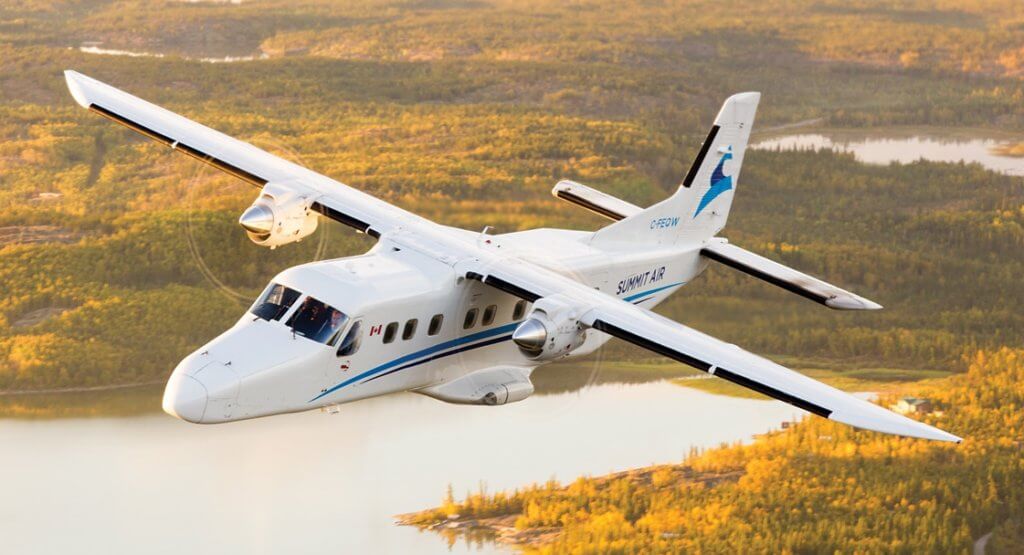
At the time of writing in early October, Summit personnel were excited about the newest aircraft scheduled to join the company’s fleet later that month: the only large cargo door ATR-72 in the Canadian marketplace.
“It’s a pure freighter with a large cargo door, capable of accepting industry standard 108 x 88-inch aluminum ‘cookie sheets’ onto a roller floor,” said Cane. “The 17,000 pound capacity of this aircraft, coupled with the low operating costs of the ATR-72, make it a more competitive aircraft than the Dash 7, Dash 8, Buffalo and the Hercules.”
Maintaining a diverse fleet demands a larger number of pilots; Summit currently has 51. “There are very few pilots that are cross-qualified,” said Cane. “Most are dedicated to a specific type. Typically, just the training captains and some of the senior manager captains are cross-qualified. We try not to cross-qualify on large types, so some will fly a small type and a large type.” To mitigate risk from using dissimilar avionics, Summit has installed identical avionics packages across all large 705 aircraft types.
Summit Helicopters
To complement Summit Air’s fixed-wing operations, Ledcor purchased Yellowknife-based Trinity Helicopters in January 2013 and renamed it Summit Helicopters. Expansion the following year saw an acquisition of CC Helicopters in Kamloops, B.C.
Summit Helicopters currently operates a fleet composed of Bell 412, 407, and 206 models, Sikorsky S-76A++, and an MD 500. Together with Summit Air, the helicopter operation forms the Summit Aviation Group.
Zirnhelt, who also oversees commercial and operational aspects of Summit Helicopters, said that while Yellowknife is Summit’s fixed-wing base, Kamloops is the company’s main helicopter base.
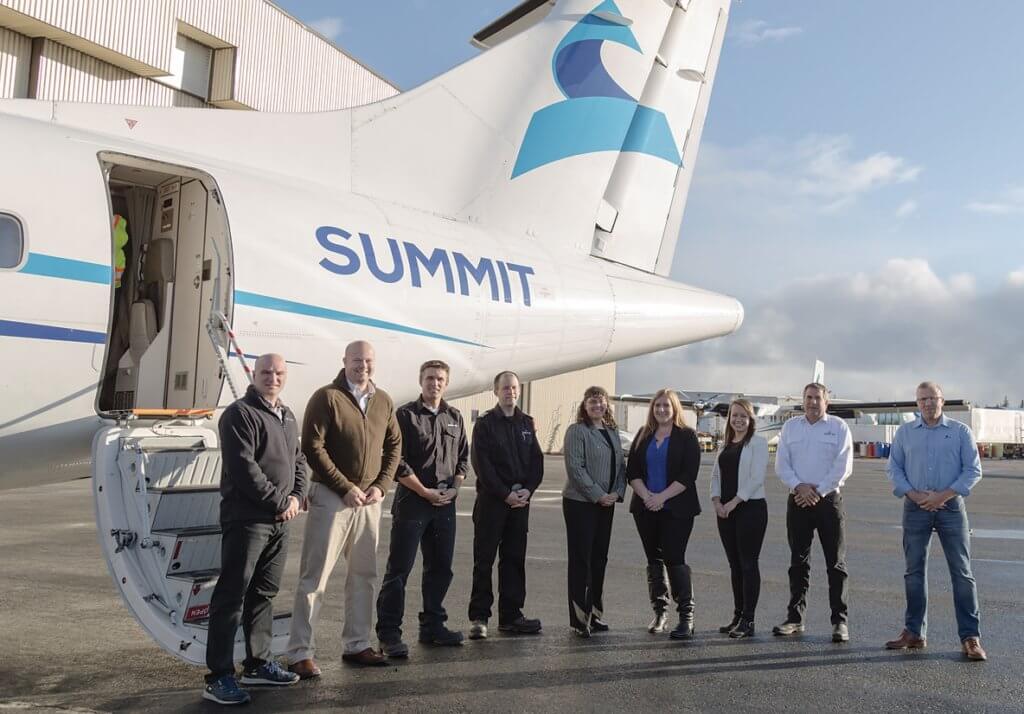
“The driver of that is the B.C. air ambulance contract,” he said. “It’s an important component of our work.” The other main helicopter operations are in Terrace, B.C., Fort McMurray, Alta., and Yellowknife, with seasonal bases in Lillooet, B.C., and Norman Wells, N.W.T.
“We are pretty diversified in what we do, but we try to tie fleet growth with long-term contracts,” continued Zirnhelt. “We do forestry, utility, exploration, and firefighting work out of almost all of our bases. In Fort McMurray, we have a helicopter that primarily serves an Alberta forestry contract. Unlike its sister company, Summit Helicopters doesn’t maintain any aircraft overseas. Our aim is to focus on North America.”
Also in contrast with Summit Air, the helicopter operation is able to maintain a more homogeneous fleet. “There are always efficiencies to be gained when you operate fewer aircraft types,” said Zirnhelt. “We are focused on the Bell product; we do have some Sikorskys and we operate an MD-500 in Terrace.” However, he added there will be more rationalization. “We’ll eventually get out of the Sikorsky 76s and focus on Bell products, mostly 412s, 407s, and 206s.”
The Bells put in hundreds of hours battling the Fort McMurray wildfires, along with Summit Air’s help with the evacuation. “On the rotary-wing side, we were actively assisting with the firefighting work with two helicopters,” said Zirnhelt. “Our pilots are very good at it.”
Partnerships
Throughout Northern and Western Canada, the Summit Aviation Group works closely with First Nations entities, in many cases through formal partnerships.
“Across Western Canada and all of Canada there is a need for First Nations involvement,” said Zirnhelt. “We have a number of partnerships–generally they are strategic business partnerships where we go after contracts together.”
Between February 2014 and January 2015, five such partnerships were founded.
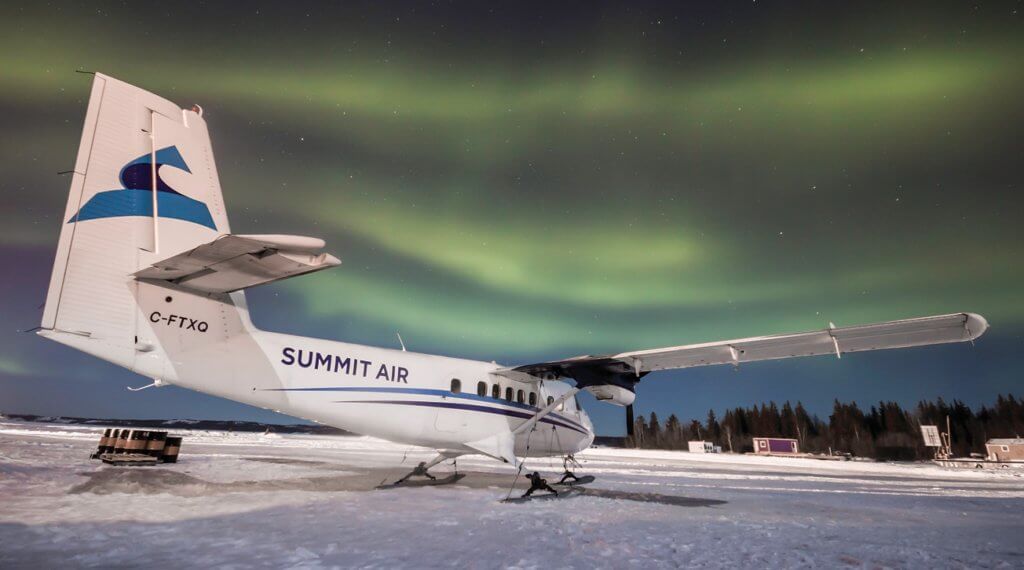
The first was Summit Kitamaat Aviation Limited Partnership between Summit Aviation Group and the Haisla Nation. It provides customized aviation services within the Haisla traditional territory near Kitimat and Terrace, B.C.
Next was Summit Air Baffin, an agreement between Summit Aviation Group and a team of local business people in the Baffin region of Nunavut to provide aviation services within Baffin Territory. In particular, the service covers all community air transport between the Baffinland project–the Mary River iron mine on Baffin Island–and the rural communities from which it draws its Inuit workforce, including Clyde River, Pond Inlet, Arctic Bay, Igloolik and Hall Beach.
This was followed by DCSALP (Det’on Cho Summit Aviation LP) between the Summit Aviation Group and the Det’on Cho Corporation, providing customized aviation solutions in support of the mining and exploration industries within the traditional territorial boundaries of the Yellowknives Dene. “Currently, this would be our most active business partner,” noted Zirnhelt.
The fourth partnership was named Summit Air Kitikmeot between the Summit Aviation Group and a team of local business owners in the Kitikmeot region of Nunavut. It provides aviation services within the Kitikmeot region and specializes in passenger and freight movements into its communities. In July, the partnership signed a three-year contract with TMAC Resources Inc. to supply mining crew transportation to TMAC’s Hope Bay Project south of Cambridge Bay, Nunavut. One of Summit’s ATR-72s will service the project with regular flights.
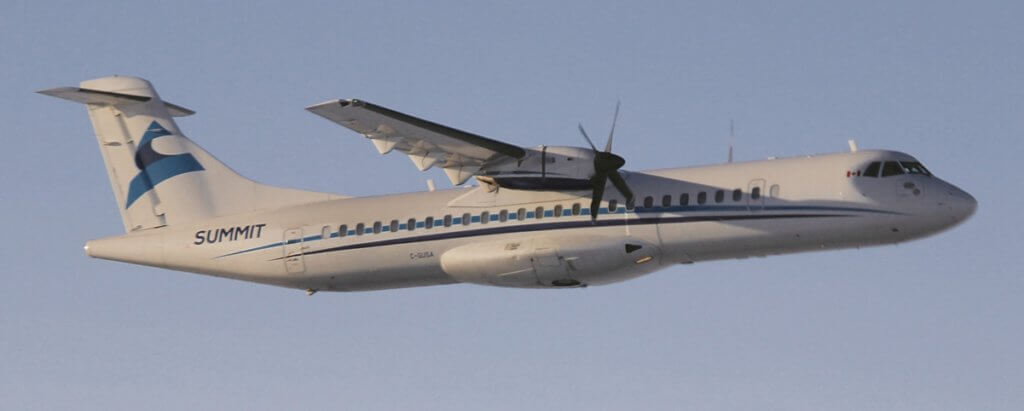
The partnerships amount to broad and successful relationships that deliver critical air services to these First Nations organizations. For some, it is their only transportation link. And there’s more in it than just transportation services; jointly formed, these partnerships share economic benefits, too.
For the future, Zirnhelt said Summit will continue on its current path of serving the North, focusing on partnerships, the fleet rationalization program, and working with northern airlines.
“We don’t have any ambitions to get into the scheduled airlines business,” he concluded. “But further cooperation with other scheduled airlines is a big part of our business plan going forward.”
